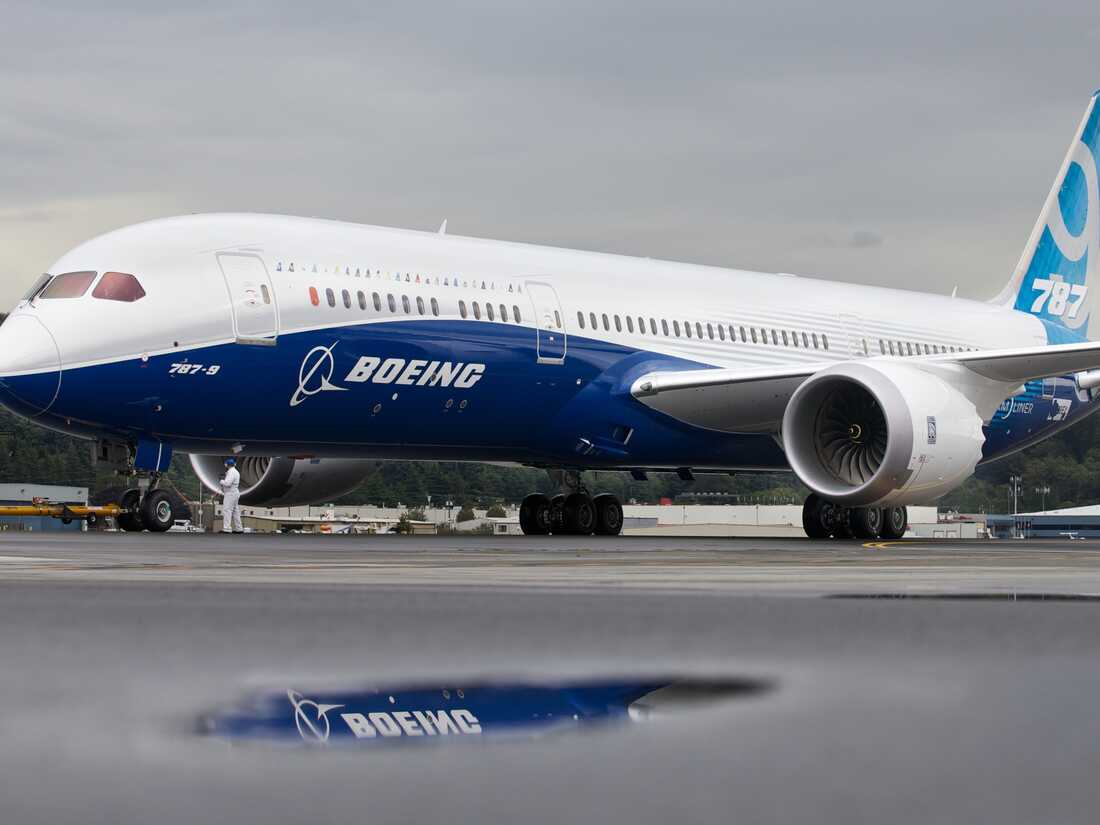National
A Boeing whistleblower raises fresh concerns about the 787, and the FAA investigates
A Boeing 787-9 Dreamliner taxis at Boeing Field in Seattle, Washington.
Stephen Brashear/Getty Images
hide caption
toggle caption
Stephen Brashear/Getty Images
A Boeing 787-9 Dreamliner taxis at Boeing Field in Seattle, Washington.
Stephen Brashear/Getty Images
WASHINGTON — Federal regulators are investigating a whistleblower’s claims about flaws in the assembly of Boeing’s 787 Dreamliner.
Longtime Boeing engineer Sam Salehpour went public Tuesday with claims that he observed problems with how parts of the plane’s fuselage were fastened together. Salehpour warns that production “shortcuts” could significantly shorten the lifespan of the plane, eventually causing the fuselage to fall apart in mid-flight.
“If left unchecked, this could result in catastrophic failure,” Salehpour said Tuesday during a press briefing to discuss his claims.
A spokesman for the FAA confirmed that the agency is investigating those allegations, which were first reported by the New York Times, but declined to comment further on them.
Boeing immediately pushed back.
“These claims about the structural integrity of the 787 are inaccurate and do not represent the comprehensive work Boeing has done to ensure the quality and long-term safety of the aircraft,” Boeing spokeswoman Jessica Kowal said in a statement. “We are fully confident in the 787 Dreamliner.”
The latest whistleblower allegations come at a difficult time for Boeing. The company was plunged into crisis in January when a door plug panel blew off a 737 Max jet in midair, renewing troubling questions about quality and safety at the company. Last month, CEO Dave Calhoun announced he will step down at the end of the year.
The concerns Salehpour raises with the 787 Dreamliner appear to be similar to those that prompted the FAA to ground the plane in 2021, when regulators found production flaws including unacceptable gaps between the fuselage panels.
The FAA subsequently approved Boeing’s plans to revise its quality control and production processes, paving the way for the planemaker to resume 787 deliveries the following year.
But Salehpour and his lawyers argue that Boeing has never adequately addressed those concerns. Instead, he says the company took “shortcuts” by applying greater force to fit segments of the fuselage together.
“Boeing hid the problem by pushing the pieces together with force to make it appear like that the gap didn’t exist,” Salehpour told reporters at Tuesday’s press briefing.
“I literally saw people jumping on the pieces of the airplane to get them to align,” he said. “That’s not how you build a plane.”
Boeing says it has conducted extensive testing, and that these issues “will not change or affect the expected lifespan of the 787 fuselages.”
“The issues raised have been subject to rigorous engineering examination under FAA oversight. This analysis has validated that these issues do not present any safety concerns and the aircraft will maintain its service life over several decades,” the company said in response to Salehpour’s claims.
The 787 is made with lighter-weight composite materials, which help the aircraft deliver greater fuel efficiency than older 767s and 777s. But the rollout of the Dreamliner has been troubled from the start.
This is not the first time a Boeing whistleblower has raised concerns about the 787.
John Barnett, a former Boeing quality control manager, went public with a string of problems he says he identified at the plant in South Carolina where he once helped inspect the Dreamliner.
Barnett was found dead in his truck of an apparent self-inflicted gunshot wound in March. Police in Charleston, S.C., are investigating. He was in the midst of testifying in a deposition related to his wrongful termination lawsuit against the company.
Salehpour faced retaliation from Boeing after raising his concerns internally, according to his lawyers.
“He raised his hand again and again,” said his attorney, Debra Katz. “He was threatened with physical violence. He was threatened with termination. He was transferred off the 787. He has been punished repeatedly.”
In its statement, Boeing said that all employees are encouraged to “speak up when issues arise,” and that “retaliation is strictly prohibited at Boeing.”
Salehpour is expected to testify on Capitol Hill next week. The Permanent Subcommittee on Investigations of the Senate Committee on Homeland Security & Government Affairs will hold a hearing on April 17th titled “Examining Boeing’s Broken Safety Culture: Firsthand Accounts.”
“I’m doing this not because I want Boeing to fail,” Salehpour told reporters, “but because I want it to succeed and prevent the crashes from happening.”
